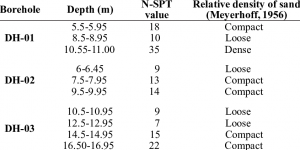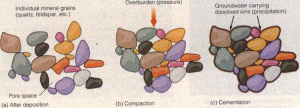What is Density of Sand? its Formula, and 3 Factors
Density of Sand
The density of Sand utility returns the density of sand based on the condition of sand such as wet, packed, or dry loose or density of sand is affected by whether the sand is packed or loose, and whether it is dry or wet.
The grains of sand are forced into tighter formation and more matter is in the volume when it is packed and water is in the sand also affecting the total matter in the volume when the sand is wet.

As we know that mass per unit volume/mean particles per unit volume is known as density and density of sand varies upon several factors and its conditions.
The Formula for Density of Sand:
The ratio of the mass of the sand to the volume of the calibrating container gives the sand density.
Density = Mass of Sand / Volume of Sand
Let’s say that .015 m3 is the volume of sand and 24 kg is the mass of sand then,
24 / .015 = 1600 kg/m3
There are the following mean densities of the different conditions of sand:
Loose Sand:
Loose sand is dry sand that has been moved or otherwise agitated to loosen the natural packing process and its density is 1442 kg/m3.
Dry Sand:
Dry sand is sand in its natural undisturbed form where it has been partially packed by rain and gravity over time but is now dry and its density is 1602 kg/m3.
Packed Sand:
Packed sand has been manually or mechanically packed and its density is 1682 kg/m3.
Wet Sand:
Wet sand has been standing in a natural setting and naturally compressed that is now wet and its density is 1922 kg/m3.
Wet Packed Sand:
This sand is nearly saturated with water and is packed sand and its density is 2082 kg/m3.
Factors of Density of Sand:
The sand density depends on the following factors as given below;
Firstly, it is important to know what is the density of the minerals that make up the sand and most of the sands are made either of Quartz or shells from marine animals made of Aragonite. Quartz has a density of 2.65 g/cm³ and Aragonite has a density of 2.9 g/cm³ and remembers that those density values are for the bulk, solid, and compact minerals.

Secondly, there is the matter of how compact the sand is and compaction means that weight reduces the spaces between grains by making them closer in a closed-packed arrangement and reduces the total volume of sand. But it reduces the porosity and increases density because it has little impact on weight as shown in the image;

The cementation and matrix also change density and involve finer materials such as mud and clay or chemical precipitates like cement that occupies the spaces between grains and while having little effect on its volume increases the mass of the sand. The compaction reduces the porosity and increases the density as shown in the image;

